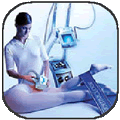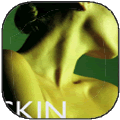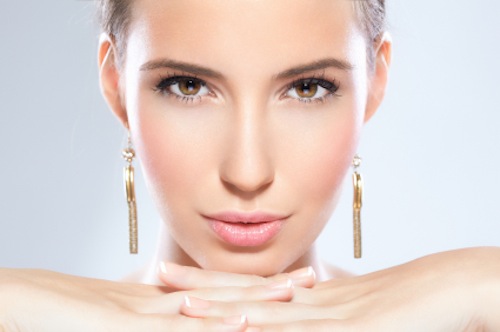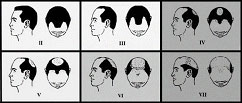
| Home | Call Now - +91 9811157787 |

    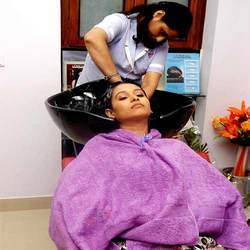  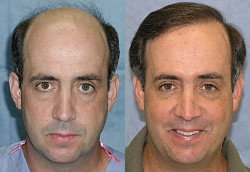 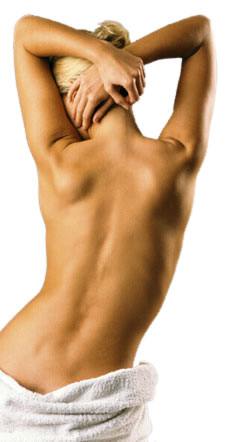    |
SKIN CLINIC Delhi
Skin Clinic Delhi
Expertise for the Life of Your Skin
Dermatologist Clinic DelhiAcne and Rosacea ACNE Acne is one of the most common of all skin problems.It affects most teenagers to some degree and even many adults. Acne presents in the form of whiteheads, blackheads, pimples, and in some people, deep painful bumps that look and feel like boils. Acne most commonly occurs on the face but can also appear on the back, chest, shoulders, and neck. Acne usually begins around puberty, when members of both sexes experience an increase in the production of sex hormones called androgens. These hormones regulate the activity and size of the oil-producing, or sebaceous glands that reside in the pores or hair follicles of the skin. The increased production of these hormones causes the oil glands to get bigger in the areas where acne occurs. The sebaceous glands make an oily substance called sebum. Sebum travels from the hair follicles to the surface of the skin. The lining of the wall of the hair follicle sheds skin cells, which then stick together with the sebum. The follicle gets clogged, plugging up the opening in the surface of the skin. Whiteheads and blackheads are the result of clogging of the pores. The sebum and cell debris together contribute to the growth of bacteria that live in your pores. The body will naturally attempt to clear the clogged pores by sending in certain specialized cells that invade the follicle to help clean it up. However, in the process, the wall of the follicle may weaken and rupture, emptying the contents of the follicle into the surrounding tissue. When this occurs, swelling or redness can develop around the affected follicle, resulting in the larger bumps or pimples characteristic of acne. These are known as papules and pustules and can sometimes cause scarring. From the beginning until its disappearance, the life cycle of a pimple can take 8 weeks to run its course. And it can take even longer for the darkened spots left by some acne pimples to fade completely. Who gets acne? It is estimated that as many as 70 million people in the U.S. suffer from acne. In most people, acne clears up after a few years. But at its worst, acne can cause permanent scarring of the skin. And even when there are few physical marks left, the emotional ones can be devastating. Treatment There are numerous treatment options for people who suffer from acne. How you and your dermatologist decide to treat your acne will depend on the severity of your acne. Several lotions and creams are available without a prescription that are helpful in mild cases of acne. For more severe cases of acne, there are prescription creams and lotions. Some contain antibiotics to help get rid of the bacteria that contribute to the formation of acne pimples. In some cases, oral antibiotics may be given. In many cases, a dermatologist will recommend a combination of two or more treatments for their patients with acne. Other medications work to get rid of the pimples and help the skin to stay clear. A dermatologist can physically extract some kinds of acne pimples, especially blackheads. This kind of procedure should only be performed by a dermatologist or other skilled professional. Squeezing or picking at acne and pimples can result in infection and permanent scarring. Some options for acne treatment are listed below:
Can I prevent my acne from coming back? A dermatologist can prescribe a regimen that will help get rid of active acne and pimples and also prevent new ones from appearing. By using medications correctly and consistently, patients can prevent new acne pimples from forming. Stopping medication or “spot treating” visible pimples may allow new pimples to grow and take weeks to clear again. Medication should be applied in the same way every day as recommended by a dermatologist. Can acne be cured? There is no instant or immediate cure for acne, but it can be controlled. Scarring may be prevented with proper care and treatment. Again, correct and consistent use of acne medication and following a dermatologist’s instruction is the best bet. *The most common side effect seen with Minocycline is dizziness which occurs two to three hours after taking the medicine. One can usually avoid this problem if you take your capsule at bedtime for the first two weeks. A very few people will have continued dizziness on awakening and must discontinue the medication. Other reported side effects with Minocycline include: yeast infections, diarrhea, increased skin pigmentation, and allergic skin rashes. Rarely liver problems and lupus have been seen with Minocycline. People with decreased kidney function, women who are pregnant or breast feeding, and children less than eight years old should not take Minocycline. If there is a chance you may be pregnant, discontinue the medication. Although minocycline has been reported to increase sun sensitivity, although it is rare. If you think that you sunburn more easily while on Minocycline, apply a sunscreen with an SPF of 15 or higher. **Septra should be taken with a large glass of water with or without food. It may rarely cause stomach upset with nausea and vomiting. This is a sulfa medication and should not be taken by those who are allergic to Sulfa. A few people develop serious allergic reactions including severe skin rashes and hives. If you develop a rash while on Septra DS, stop the medication immediately and notify our office. Rarely, Septra DS may cause a decrease in the white blood cells, red blood cells, or platelet count. We routinely do a blood test at the first office visit after starting the medication and every six months thereafter. Septra DS may cause an increased sensitivity to the sun. If you notice this, use a sunscreen with SPF 15 or higher. Septra DS may interact with other medications including: phenytoin (Dilantin), diuretics (thiazides), Coumadin, and Methotrexate. If you are prescribed any of these, please discuss this with your physician or call our office. ***Doxycycline is an oral antibiotic that is effective in the treatment of acne. Take your capsules with a large glass of water on an empty stomach at least one hour before a meal or two to three hours after you eat. Do not take within one hour of milk, dairy products, antacids, iron, or calcium containing preparations. If the Doxycycline is taken with food or milk, it is poorly absorbed and is much less effective. Reported side effects with Doxycycline include: stomach upset, heartburn, yeast infections, and increased sensitivity to the sun. If you experience heartburn, take the tablet with a cracker or cookie and a large of water. It is very important that the capsule or tablet not lodge in the esophagus. If you have the feeling the Doxycycline is “stuck” in your throat or esophagus, discontinue the medication or and take an antacid. People with decreased kidney nction, women who are pregnant or breast feeding, and children less than eight years old should not take Doxycycline. If there is a chance that you may be pregnant, discontinue the medication. Doxycycline may cause increased sensitivity to the sun with severe sunburn developing from relatively short sun exposure. Sunscreen with SPF 15 or higher should be used on all sun exposed skin. 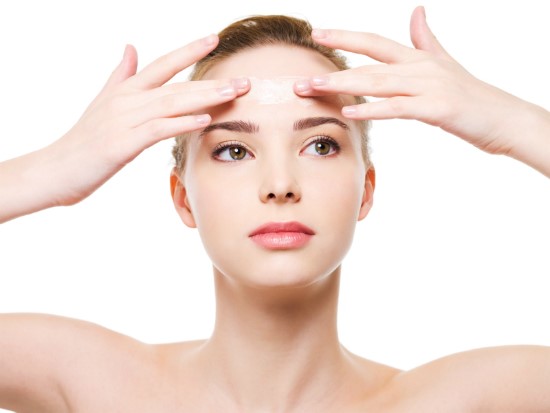 ROSACEA Rosacea is a condition that affects the skin of the face, mostly the area where people blush. A number of symptoms accompany this condition and range from mild to more severe. Some characteristics include:
How does it start, and how does it progress? The first sign of rosacea is usually rosy cheeks. As it progresses, the face may get red in patches and stay red for hours or days at a time. Eventually, the redness doesn’t go away at all. At this stage, some or all of the symptoms mentioned previously may also appear. Rosacea is a chronic condition, and that means the symptoms may come and go in cycles and fluctuate in their degree of severity. Because of this, many people mistake their rosacea for things like sunburn, windburn, a complexion change, or acne and they don’t bother to see a doctor. However, in most cases, the earlier they see a dermatologist, the quicker their rosacea can be brought under control. Who gets rosacea? Rosacea is usually seen in adults. It can affect those in their 30s, all the way up to and including people in their 70s and 80s. While rosacea is most common in persons with fair complexions, it can affect people of all skin colors and skin types. Most people who get rosacea seem to flush or blush more often than the average person and may have parents or grandparents who have the same symptoms. Because they think it is just something that “runs in the family,” they often don’t seek help from a dermatologist. Treatment Rosacea can’t be cured, but the right treatment, used faithfully, can create much clearer skin and actually helps keep symptoms from coming back. A person shouldn’t treat rosacea themselves. Nonprescription acne medications may irritate dry, sensitive skin, and may contain ingredients that appropriate for rosacea. A dermatologist can recommend the right care for your symptoms. In most cases, this would include oral antibiotics to control the papules and pustules and/or topical metronidazole like MetroGel topical gel, MetroCream topical cream, or MetroLotion topical lotion applied directly to the skin.
Skin Clinic Delhi
Following a regular cleansing and medication routine-twice a day or as prescribed by a doctor-will make treatment easier and more successful. How and what is used to cleanse and moisturize the face is also important. Here are some simple steps to follow:
Avoid rosacea triggers Below is a list of things that can aggravate your rosacea symptoms. It is unlikely that a patient will react to everything on this list, but by being observant they can discover which ones apply to them to avoid flare ups in the future.
Patients need to experiment to determine their own personal triggers. They may find it helpful to keep a daily diary of food consumption and activities to get a better idea of what causes their episodes of flushing. Once their own triggers have been identified, they should avoid them for a few days. If the patient notices a reduction in the frequency and severity of their flare-ups, they have probably identified what should be avoided to help keep their rosacea under control. A conversation with all of the patient’s doctors, in addition to their dermatologist, may also be in order, especially if they have medications prescribed to them for other medical conditions.
Infections
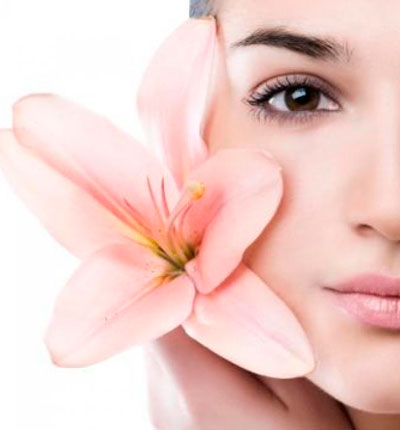 IMPETIGO Impetigo is a skin infection caused by bacteria, usually staph or strep. Impetigo is contagious. The condition starts as a tiny, barely perceptible blister on the skin usually at the site of a skin abrasion, scratch, or insect bite. Over the next few days, red and itchy sores begin to ooze, leaving behind a sticky golden crust spots that grow larger day by day. The hands and face are the favorite locations for impetigo, but it often appears on other parts of the body. Parents should keep a watchful eye Parents should not let impetigo run its course, as it may continue indefinitely without treatment. In rare cases, impetigo can lead to a form of kidney disease known as acute glomerulonephritis. Cuts and scrapes on a very young child will likely be noticed as the parent bathes the child. Unfortunately, after children reach a certain age and bathe alone, they tend to demand privacy for their bodies. It is important that parents teach their children to report any unusual rashes, bumps, or irritations to them so that care may be taken to avoid infection. and is contagious. How does one get impetigo? While the germs causing impetigo may have been caught from someone else with impetigo it usually begins out of the blue without an apparent source of infection. Contagion Impetigo is contagious when there is crusting or oozing. While it’s contagious, take the following precautions:
All these measures are only needed during the contagious-crusting or oozing-stage of impetigo. Usually, the contagious period ends within two days after the treatment starts. Then children can return to school and special laundering and other precautions stopped. If the impetigo doesn’t heal in one week, please return for evaluation. Treatment Antibiotics taken by mouth usually clear up impetigo in four to five days. It’s most important for the antibiotic to be taken faithfully until the prescribed supply is completely used up. In addition, an antibiotic ointment should be applied thinly four times daily. Bacitracin, Polysporin of Bactroban ointment is advised. Bacitracin and Polysporin can be purchased without a prescription. Keys to making treatment successful include:
SCABIES Scabies is a highly contagious, but curable, skin disease that affects nearly one third of a billion people worldwide. It is caused by a tiny mite, just barely visible to the naked eye, that spends nearly its entire life in or on the human skin. Although more common in warm climates, scabies can occur anywhere and within all social and income levels. It affects men, women, and children of all ages. Prevention Transmission Scabies is highly contagious and easily transmitted from person to person through close physical contact, such as between family members, sexual partners, or children playing at school. An unproven, but possible method of transmission is via infested clothing, bedding and towels. To avoid reinfestation, you doctor may recommend that all affected household members be treated at the same time with the same 24 hour period. Although scabies mites can’t live long without a human host, there have been a few cases of apparent transmission through infested clothing and bedding. Even so, heroic cleaning efforts are generally unnecessary. Normal hot water laundering of towels, linens, and all clothing used within the previous 48 hours is typically sufficient to prevent reinfestation. Clean clothes or heavy winter jackets and sweaters need not be cleaned. Treatment Please see a physician or dermatologist for treatment options. Aging Skin As we grow older, we see and feel certain changes in our skin, the body’s largest and most visible organ. It becomes drier, more wrinkled and spots and growths appear. The skin tends to heal more slowly. Some of these changes are natural, unavoidable and harmless. Others are itchy or painful, and some such as skin cancers, are serious and require immediate medical attention. Many problems can be prevented whether avoidable or not, health endangering or merely cosmetically undesirable, most unwanted aging-associated skin problems can be addressed by therapies now available.
AGE SPOTS Age spots are small darkened patches on the skin of older adults who have been regularly exposed to the sun over many years. They are invariably found on the backs of the hands, and arise as a result of the skin's defense mechanism against long-standing sun exposure. As pigment pools in some spots to protect the skin, the brown spots form. Solar lentigines (or lentigo) is a medical name for this naturally occurring condition. It is usually light complexioned people with a tendency to burn, rather than tan, who develop age spots in later years. Treatment To help patients with age spots (hyperpigmentation) achieve more even skin tone, physicians may prescribe the use of skin bleaching products. Skin bleaches slow the production of melanin, causing dark spots to gradually fade and return to normal skin color. These skin medications must be applied regularly, usually twice a day to be effective. The skin lightening process may take several months to achieve the desired results. The active ingredient in skin lightening products is called hydoquinone. The maximum prescription strength is 4% hydroquinone, which contains twice the amount of active ingredient as over-the-counter bleaches. Some hydroquinone products contain sunscreens or sunblock, so you don’t have to bother with applying a separate sun protection product. Hydroquinone may also be combined with glycolic acid for its skin moisturizing benefits. These creams, however, can neither prevent new spots from forming, nor are they effective at lightening most lesions
SEBORRHEIC KERATOSES Seborrheic keratoses are harmless, common skin growths that first appear during adult life. As time goes by, more growths appear. Some people have a very large number of them. Seborrheic keratoses appear on both covered and uncovered parts of the body; they are not caused by sunlight. The tendency to develop seborrheic keratosis is inherited. Seborrheic keratoses are harmless and never become malignant. They begin as slightly raised, light brown spots. Gradually they thicken and take on a rough, warty surface. They slowly darken and may turn black. These color changes are harmless. Seborrheic keratoses are superficial and look as if they were stuck on the skin. Persons who have had several seborrheic keratoses can usually recognize this type of benign growth. However, if you are concerned or unsure about any growth, consult a dermatologist. Treatment Seborrheic keratoses can easily be removed in the office. However, the only reason for removing a seborrheic keratosis is if it is irritated, itches, or annoys you by rubbing against your clothes. Often patients are concerned whether Medicare or their insurance will pay for removal of seborrheic keratoses. If a lesion ever bleeds, has intense itching or pain, or shows signs of inflammation, with swelling or redness, insurance will consider removal a medical necessity. Also if a lesion has grown or changed and there is a question about the diagnosis, removal and pathology would be covered.
WRINKLES As skin ages, it loses its elasticity. Collagen and elastin, the tissues that keep the skin supple, weaken. The skin becomes thinner and loses fat, so that it looks less plump and smooth. While all these changes are taking place, gravity is also at work, pulling at the skin, causing it to sag. Can wrinkles be avoided? How wrinkled your skin becomes depends largely on how much sun you have been exposed to in your lifetime. The sun is the major cause of unwanted changes in the skin with aging. Cigarette smoking can also contribute to wrinkles. Wrinkles also depend on your parents-the tendency to wrinkle is inherited. The good news is some wrinkles can be prevented. To avoid wrinkles caused by the sun, beginning in childhood, always wear a sunscreen with an SPF of at least 15, a hat with a brim, and other protective clothing when in the sun. Don’t deliberately sunbathe and limit sun exposure between 10am and 3pm. If you have already sun-damaged your skin, you will still benefit from beginning sun protection as an adult. Over-the-counter “wrinkle” creams and lotions may help dry skin and make it feel better, but they do little or nothing to reverse wrinkles. Treatment There are some promising treatments for aging skin.
None of these remedies can guarantee eternally youthful skin, but they can improve the overall appearance of your skin. Severely wrinkled skin can be improved with surgery and/or lasers. Discuss your options with your dermatologist.
Adora Day spa offers FDA approved offers Restylane and Juviderm. The spa also offers Perlane and Radiesse for treatment of deeper facial wrinkles. Lasers and intense pulsed light can also be useful in softening fine lines and wrinkles by stimulating collegan production under the skin. Adora Day spa offers V-Beam laser treatments and Fotofacials. Both leave the skin with a softer more even appearance with little or no down time. Thermage, the non-surgery face lift can help with sagging skin. While it doesen't help with individual wrinkles, it can help tighten your skin to give a more youthful appearance.
Leg Vein Disorders
SPIDER VEINS (SUPERFICIAL LEG VEINS) Unwanted blood vessels-smaller ones are called spider veins-have a red or bluish color and appear on the surface of the body, particularly the legs and occasionally the face or elsewhere. They may be visible as short, unconnected lines each about the size of a large hair, they may be connected in a scraggly sunburst pattern, or they may resemble a spider web or tree with branches. In some people, they occur in a small area and are not particularly noticeable. In others, they may cover a large area of the skin and be quite unsightly. A characteristic of unwanted blood vessels in some sufferers is occasional pain, ranging from a dull throbbing pain to a burning sensation. Though the unwanted blood vessels do carry blood, the great majority, especially spider veins, are not necessary to the circulatory system. Thus, if their presence is distressing, they can be treated by injection of a solution that will cause them to disappear or at least become much smaller. The chance for a greatly improved appearance is about 80%, particularly if the nurse or physician is experienced in their treatment. What causes spider veins? Spider veins occur in both men and women, but more frequently in women. The hormone estrogen may play a role in their development, because puberty, birth control pills or pregnancy often seem to bring them on. During pregnancy, the enlarged uterus may restrict blood flow contributing to their development. They may also occur after a blow to a certain area of the body or as a result of wearing tight girdles or hosiery held up with tight rubber bands. In addition, spider veins may occur in association with underlying large varicose veins. Can they be prevented? There is no known method of prevention. Wearing support hosiery may prevent some unwanted blood vessels from developing in some people. Maintaining a normal weight and regular exercise may also be helpful. Protection from the sun is important to reduce the number of unwanted vessels on the face. Treatment In the majority of cases, a procedure called sclerotherapy is used, in which a solution, called a sclerosing solution, is injected with a very fine needle directly into the blood vessel. The solution irritates the lining of the vessel, causing it to swell and stick together and the blood to clot. Over a period of weeks, the vessel turns into scar tissue that fades from view, eventually becoming barely or not visible at all. Depending on the size, a single blood vessel may have to be injected more than once, some weeks apart, but in any one treatment session a number of vessels can be injected. The registered nurses at ADORA DAY SPA perform this treatment. For a complimentary consultation, please call (307) 773-8520. Below are some common questions asked by patients:
VARICOSE VEINS Larger unwanted blood vessels may be raised above the skin surface and serpentine; they may occur in association with spider veins. These large veins are called varicose veins, which frequently occur in association with a poorly working valve in a large vein. Treatment Surgery is most often indicated in the treatment of painful vericose veins. Please visit with a physician at the Cheyenne Skin Clinic about this condition and the possibility of having them removed. Occasionally larger varicose veins underlie spider veins. In such cases, some physicians believe these vessels should be treated before the spider veins, either by sclerotherapy followed by compression or by a surgical procedure.
If unsightly and painful veins have been preventing you from
living a full. life, these Questions & Answers offer new hope about
treatment.
Benign, Non-Contagious Skin Disorders DERMATOFIBROMAS Deramtofibromas are benign, relatively common skin nodules that may occur on any body surface, but appear most frequently on the lower legs. They form a firm, fibrous growth that feels like a small button or pea fixed to the skin surface. The cause is unknown, although trauma, such as insect bites, has been thought to induce some lesions. Treatment No treatment is necessary unless the lesions enlarge rapidly, become painful, or undergo repeated trauma, such as shaving the top off while shaving one’s legs. The lesions can be easily removed by minor surgical excision in a dermatologist's office. When considering removal, one should balance the present appearance of the dermatofibroma with the probable scar that will remain after the excision.
GRANULOMA ANNULARE Granuloma annulare is a benign, non-contagious skin condition most commonly seen in children and young adults. It usually presents as skin colored, red-to-purple, dome shaped papules, often arranged in a complete or half circle. The most common location is on the backs of the hands, tops of the feet, ankles, wrists, elbows, arms, and legs. Because of the circular appearance, occasionally a fungus infection (ringworm) is mistakenly suspected. Usually the bumps do not itch or hurt. When the appearance is not typical, a skin biopsy may be needed to establish the diagnosis. The biopsy shows a localized deterioration of the supporting collagen fibers in the dermis (the middle layer of skin). Treatment The cause of granuloma annular is not known, but we do know that the lesions usually resolve within two years. There are several treatments which may hasten the resolution in cases where appearance is a concern. In summary, granuloma annulare is an interesting skin condition, but it is neither serious nor contagious.
LIPOMAS Lipomas are common, benign tumors, composed of mature fat cells, which grow under the skin and typically appear as round or oval lumps. These growths are generally harmless, and it is doubtful whether they ever undergo malignant changes. While they may occur anywhere on the body, they typically show up on the neck, trunk, abdomen, forearms, buttocks, and thighs. How can you tell a lipoma from a potentially serious problem? You can't. If you have a mysterious lump or new growth, it warrants professional examination. Some growths may be diagnosed visually, but for some, your dermatologist may need a biopsy to be certain. Skin cancers are among the most easily cured cancers if they are diagnosed and treated early. Treatment Treatment is usually not required unless there is a notable change in the lump. In such cases, a biopsy may be recommended. Generally, removal is only recommended if the lipoma causes pain, pressure, irritation, or if it is growing. Some people also choose to have a lipoma removed for cosmetic reasons. Liposuction and surgical excision are both effective means of removing lipomas.
PITYRIASIS ROSEA Pityriasis rosea is a common, harmless skin disease. Pityriasis rosea often begins with the appearance of a scaly, large, pink, "herald" or "mother" patch on the chest or back. This is followed by more pink, oval patches on the body, arms, and legs within a week or two that may assume the outline of an evergreen tree with drooping branches. The cause is unknown, but we do know that:
Treatment Nature always cures this disorder, albeit sometimes slowly. Treatment doesn’t speed the cure. The rash of pityriasis rosea is irritated by soap, so bathe or shower with plain water. This rash makes the skin dry. Therefore, it helps to put a thin coating of bath oil on your freshly dried skin after a shower or bath. If the rash itches, treatment with a cortisone cream usually brings prompt relief. The cortisone treatments do not cure pityriasis rosea; it will only make you more comfortable while getting over the rash. In the rare instances where itching is severe, ultraviolet light treatments are often helpful. Pigmentation Disorders HYPERPIGMENTATION The appearance of skin patches that are darker that the surrounding skin color is usually caused by natural body processes, and sometimes by external causes. The term for this skin darkening is epidermal hyperpigmentation. Epidermal refers to the upper layer of the skin. Hyperpigmentation means excess color. Normal skin color is formed by melanin, a natural pigment that also determines eye and hair color. Epidermal hyperpigmentation occurs when too much melanin is produced and forms deposits in the skin. The condition is quite common and can affect the skin color of people of any race. Is hyperpigmentation harmful? Hyperpigmentation is not a medically harmful condition. It is advisable, however, to have darkened skin patches checked by a physician to make sure they are not a type of skin cancer. Usually people seek treatment for hyperpigmentation because it is cosmetically displeasing to them. Skin lightening products prescribed by a physician can reduce the unwanted excess color of hyperpigmented skin patches. Types of epidermal hyperpigmentation. Although all hyperpigmenation is a result of excess melanin, different names are used to describe it based on the cause of the excess melanin production and its appearance on the skin.
To avoid hyperpigmentation avoid the sun Hyperpigmented skin patches may become more pronounced when skin is exposed to the sun. This happens because the skin’s pigment, melanin, absorbs the energy of the sun’s harmful ultraviolet rays in order to protect the skin from overexposure. Skin tanning occurs as a result of this process, causing hyperpigmented areas to become even darker. Minimizing your exposure to sunlight can help prevent further darkening of existing hyperpigmented patches, as well as the formation of new ones. This is especially important for women who take birth control pills or hormone supplements and for people who have had hyperpigmentation in the past. To protect your skin, dermatologists recommend the use of a sunscreen product with an SPF(sun protection factor) of at least 15 that protects against both UVA and UVB light. A sunscreen should be used year-round on areas of the skin that are regularly exposed to sunlight such as the face and hands. Many skin moisturizers and cosmetics contain sunscreens, providing an easy way to make sure your skin is protected. Wearing long-sleeved clothing, long pants, and hats can also block the effects of sunlight exposure. Treatment To help patients with hyperpigmentation achieve more even skin tone, physicians may prescribe the use of skin bleaching products. Skin bleaches slow the production of melanin, causing dark spots to gradually fade and return to normal skin color. These skin medications must be applied regularly, usually twice a day to be effective. The skin lightening process may take several months to achieve the desired results. The active ingredient in skin lightening products is called hydoquinone. The maximum prescription strength is 4% hydroquinone, which contains twice the amount of active ingredient as over-the-counter bleaches. Some hydroquinone products contain sunscreens or sunblock, so you don’t have to bother with applying a separate sun protection product. Hydroquinone may also be combined with glycolic acid for its skin moisturizing benefits. Ask your physician about skin bleaching medications and whether one is right for treating your hyperpigmented skin patches.
VITILIGO Melanin is the substance that normally determines the color of skin, hair, and eyes. It is the pigment produced in cells called melanocytes. If melanocytes cannot form melanin or if their number decreases, skin color will become lighter or completely white-as in vitiligo. Vitiligo is a condition in which pigment cells are destroyed, resulting in irregularly shaped white patches on the skin. Any part of the body where pigment cells are present may be involved. Common sites of pigment loss are:
Who gets vitiligo? Vitiligo affects at least 1% of the population. About half the people who develop this skin disorder experience some pigment loss before they are 20 years old. About one fifth of all vitiligo patients say that other family members also have this condition. Even though most people with vitiligo are in good general health, they face a greater risk of having:
What is the cause of vitiligo? The cause of vitiligo is not known. Many people have reported a pigment loss shortly after suffering emotional stress or physical injury such as sunburn. There are three theories on the cause of vitiligo.
How does vitiligo develop? The beginning of vitiligo and the severity of pigment loss differs with each individual. Light skinned people usually notice the pigment loss during the summer as the contrast between the vitiligo skin and the suntanned skin becomes more distinct. People with dark skin may observe the onset of vitiligo any time. Individuals who have severe cases will lose pigment over their entire bodies, except for their eyes which do not change color. There is no way to predict how much pigment an individual will lose. Illness and stress can result in more pigment loss. The degree of pigment loss can vary within each vitiligo patch which means that there may be different shades of pigment in a vitiligo patch. A border of darker skin may circle an area of light skin. Can cosmetics be used to make vitiligo less noticeable? Most patients, even those who are responding well to therapy, would like to make the vitiligo less obvious. Many find that a combination of cosmetics effectively de-emphasizes their skin disorder. Patients who are interested in dyes and stains should consult a dermatologist for the names of suitable commercial products. Treatment Vitiligo is probably caused by a variety of factors interacting in specific ways. Research has advanced the understanding of the physical and phychosocial aspects of vitiligo, but the cause and cure for this disease are unknown.
Common Childhood & Adolescent Skin Disorders
CHILDHOOD ECZEMA (atopic dermatitis) Atopic dermatitis, often called eczema, or atopic eczema, is very common skin disease. It affects around 10% of all infants and children. The exact cause is not known, but atopic dermatitis results from a combination of family heredity and a variety of conditions in everyday life that trigger the red, itchy rash. How do we know if it is atopic dermatitis?
What causes atopic dermatitis? Atopic dermatitis is not contagious. People with atopic dermatitis cannot “give” it to someone else. Atopic dermatitis inflammation results from too many reactive inflammatory cells in the skin. Research is seeking the reason why these cells over-react. Patients with atopic dermatitis (or asthma or hay fever) are born with these over-reactive cells. When something triggers them, they don’t turn off as they should. We try to control atopic dermatitis by preventing the trigger factors that turn on the inflamed skin, or by “damping the flames” with anti-inflammatory therapies. What triggers atopic dermatitis? Trigger factors may be different for different people. Most children are worse when they have a cold or other infection. Most have worse problems in the winter; but others simply can’t stand the sweating during hot, humid summer weather. Let’s look at the trigger factors that seem to affect every child with atopic dermatitis.
How can you avoid triggers?
If you suspect food allergy, be systematic. Likely offenders are eggs, milk, peanuts, soy, wheat, and seafood, but any food can do it. Can you exclude the most likely offender for a week? Substitute hydrolysate for cow formula. Keep a food diary. When the skin clears up, try the food. Watch for signs if itching or redness over the next two hours. Do not try a suspect food if it causes hives or face swelling. Don’t exclude multiple food groups at the same time. It is rare to have more than one or two food allergies, and your child can get malnourished with prolonged avoidance of many foods. With allergy-prone kids, furry animals are a risk. If you must have pets, keep them outside or at least off beds, rugs, and furniture where the child plays. Dust mites collect in bedroom carpets and bedding. Simple control measures include covering pillows and mattresses, removing bedroom carpets and frequent washing of bedclothes in hot water. Think about stress-causing events and ways to cope with them. Review problems with your doctor. Try to make atopic dermatitis treatments part of a daily, family routine. Encourage children with atopic dermatitis to do what they can on their own. Treatment
When will my child outgrow atopic dermatitis? For any given child, it is difficult to predict. The majority of babies with atopic dermatitis will lose most of the problem by adolescence, often before grade school. A small number will have severe atopic dermatitis into adulthood. Many have remissions that last for years. The dry skin tendency will remain. Most people learn to use moisturizers to keep their dermatitis controlled. Occasional episodes of atopic dermatitis may occur during times of stress or with jobs that expose the skin to irritants at work.
IMPETIGO Impetigo is a skin infection caused by bacteria, usually staph or strep. Impetigo is contagious. The condition starts as a tiny, barely perceptible blister on the skin usually at the site of a skin abrasion, scratch, or insect bite. Over the next few days, red and itchy sores begin to ooze, leaving behind a sticky golden crust spots that grow larger day by day. The hands and face are the favorite locations for impetigo, but it often appears on other parts of the body. Parents should keep a watchful eye Parents should not let impetigo run its course, as it may continue indefinitely without treatment. In rare cases, impetigo can lead to a form of kidney disease known as acute glomerulonephritis. Cuts and scrapes on a very young child will likely be noticed as the parent bathes the child. Unfortunately, after children reach a certain age and bathe alone, they tend to demand privacy for their bodies. It is important that parents teach their children to report any unusual rashes, bumps, or irritations to them so that care may be taken to avoid infection. and is contagious. How does one get impetigo? While the germs causing impetigo may have been caught from someone else with impetigo it usually begins out of the blue without an apparent source of infection. Contagion Impetigo is contagious when there is crusting or oozing. While it’s contagious, take the following precautions:
All these measures are only needed during the contagious-crusting or oozing-stage of impetigo. Usually, the contagious period ends within two days after the treatment starts. Then children can return to school and special laundering and other precautions stopped. If the impetigo doesn’t heal in one week, please return for evaluation. Treatment Antibiotics taken by mouth usually clear up impetigo in four to five days. It’s most important for the antibiotic to be taken faithfully until the prescribed supply is completely used up. In addition, an antibiotic ointment should be applied thinly four times daily. Bacitracin, Polysporin of Bactroban ointment is advised. Bacitracin and Polysporin can be purchased without a prescription. Keys to making treatment successful include:
KERATOSIS PILARIS Keratosis pilaris is a common skin disorder which may affect the sides of the upper arms, the anterior thighs and the face. It usually appears between the ages of two and three, but may only become noticeable later, usually in the wintertime. In fact, most people with keratosis pilaris notice that it improves in the summer and worsens in the winter. Generally, the typical changes in the skin are rough-surfaced, slightly red bumps, each of which is at the opening of a hair follicle. This is probably an inherited trait just as some people inherit curly hair or blue eyes. It is really harmless, but may be somewhat unsightly and may occasionally itch slightly. Treatment Fortunately, the keratosis pilaris on the face almost always disappears within a year or two after the onset of puberty. The other areas may remain a problem for many years. Treatment is never rapidly effective, but is usually beneficial. Several different medications may need to be tried before the one that works best for you is found. Besides prescription medicines, you can help yourself by regularly using a good moisturizing cream or lotion on the affected areas.
MOLLUSCUM CONTAGIOSUM Molluscum contagiosum is a virus-caused growth which appears as a small bump on the skin, often with a small, central, dimple-like depression. It may occur on any part of the body and there may be a single growth or as many as 50 or more. As the name suggests, these growths are contagious and are spread from place to place on the body and to other people by physical contact. Sometimes they are spread by sexual contact and if this is the case, sexual partners should be examined for presence of lesions. Treatment Treatment consists of physically removing these superficial growths from the skin. This may be done by curettement (scraping them off with a special surgical instrument), application of various medicines to the growths or by freezing them with liquid nitrogen. Molluscum contagiosum lesions may also become infected with bacteria and may sometimes require antibiotic therapy. Since molluscum contagiosum lesions sometimes go away by themselves, treatment by cautery or surgery requiring stitches is avoided because of the scarring that results from these methods. Sometimes new lesions keep appearing after treatment. This is probably because some growths were in an early stage at the time of the treatment and could not be seen with naked eye. Eventually, after all visible and incubating lesions have been destroyed the appearance of new molluscum contagiosum lesions will stop.
SCABIES Scabies is a highly contagious, but curable, skin disease that affects nearly one third of a billion people worldwide. It is caused by a tiny mite, just barely visible to the naked eye, that spends nearly its entire life in or on the human skin. Although more common in warm climates, scabies can occur anywhere and within all social and income levels. It affects men, women, and children of all ages. Prevention Transmission Scabies is highly contagious and easily transmitted from person to person through close physical contact, such as between family members, sexual partners, or children playing at school. An unproven, but possible method of transmission is via infested clothing, bedding and towels. To avoid reinfestation, you doctor may recommend that all affected household members be treated at the same time with the same 24 hour period. Although scabies mites can’t live long without a human host, there have been a few cases of apparent transmission through infested clothing and bedding. Even so, heroic cleaning efforts are generally unnecessary. Normal hot water laundering of towels, linens, and all clothing used within the previous 48 hours is typically sufficient to prevent reinfestation. Clean clothes or heavy winter jackets and sweaters need not be cleaned. Treatment Please see a physician or dermatologist for treatment options. Pigmentation Disorders ALLERGIC CONTACT DERMATITIS Contact dermatitis is a condition in which people develop an allergy to a product or substance that comes in contact with the skin. The condition is usually manifested as a rash on the skin and can occur on the face and eyelids, a condition called eyelid and facial contact dermatitis. The usual suspect: Nickle A common irritant responsible for allergies includes nickle. Nearly 6% of Americans are allergic to nickel, making the silver-white metal the second most common cause of allergic skin rashes, behind only poison ivy. The incidence of nickel sensitivity among women is higher than the average, probably around 10 percent. Other common cosmetic ingredients responsible for allergic contact dermatitis:
An unusual suspect: Latex Natural rubber latex is responsible for a recent and widespread outbreak of allergic skin reactions, ranging from mild irritation to anaphylactic shock. Latex reactions were rarely reported prior to 1970, but increasing numbers of reports since the late 1980's have led scientists to believe that increased exposure to latex products in recent years has caused more people to become sensitized. About a third of those who develop hives from contact with latex also develop such symptoms as asthma and even anaphylactic shock. This should lead people who suspect they are allergic to latex to have a professional diagnosis. Finding the culprit Finding the source of the allergy requires some good detective work. Have you recently changed fragrance? Have you use a new soap, shampoo, or laundry detergent? Has the same brand you've always used been reformulated? If you have recurrent problems, try keeping a diary of the products you use, and note when the symptoms start to appear and/or stop. Should you develop a contact dermatitis, see your dermatologist for relief. He/she can perform a patch test to determine the irritating substance. If you suspect a nickel allergy, it is a good idea to have the dermatologist test for nickel sensitivity when considering having ears pierced. In any case, the piercing should be done with a stainless-steel needle. As a further precaution, stainless-steel or high-quality 18 karat gold studs should be worn as the first pair of earrings. Nickel sensitivity often does not result in a rash for weeks or months after contact with the metal. To further confuse the issue, a rash may not necessarily occur on the part of the body that makes contact with the metal.
HIVES (URTICARIA) Hives are localized pink swellings (wheals) that occur in groups on any part of the skin. Each individual wheal lasts a few hours before fading away, leaving no trace. New hives may continue to develop as old areas fade. Hives can vary in size from as small as a pencil eraser to as large as a dinner plate and may join together to form larger swellings. When hives are forming they usually are very itchy, but may also burn or sting. Hives are a very common medical condition; 10-20% of people will have at least one episode of hives in their lifetime. In most people, hives go away within a few days to a few weeks. Occasionally, however, a person will continue to have hives for many years. When a hive forms around the loose tissues of the eyes, lips, or genitals, the tissue may swell excessively. Although frightening in appearance, the swelling goes away in less than 24 hours. The most common foods that cause hives are: 1. Nuts 5. Chocolate 2. Fish 6. Tomatoes 3. Eggs 7. Fresh Berries 4. Milk Fresh foods cause hives more often than cooked foods. Food additives and preservatives such as tartrazine (yellow dye #5) may be responsible. Hives may appear within minutes or several hours after eating, depending on the site in the digestive track where the food is absorbed into the system. Drugs Virtually any medication (prescription or over the counter) can cause hives, but drugs that most commonly produce urticaria include antibiotics (especially penicillin), pain medications, sedatives, tranquilizers, and diuretics. It is important to realize that antacids, vitamins, eye and ear drops, laxatives, vaginal douches, or any other non-prescription item is a potential cause of urticaria. It is important for your doctor to be aware of all these preparations you use. Infections Many infections can cause urticaria. Viral upper respiratory tract infections are a common cause in children. Other viruses including Hepatitis B may also cause urticaria, as can a number of bacterial and fungal infections.
Chronic Urticaria Bouts of hives lasting more than six weeks are termed chronic urticaria. The underlying cause of chronic urticaria is usually much more difficult to identify than that of acute urticaria. In many studies of patients with chronic urticaria, a cause can be identified in only a small percentage of patients. Your doctor will need to ask numerous questions in an attempt to identify a possible cause. You will also be asked to help in detective work. The amount of lab work performed by your doctor will vary with your history and examination. A patch test can be performed to determine the cause of hives. Lab work is may also be suggested. Treatment The best treatment for hives is to find the cause and then to eliminate it. Unfortunately, this is not always possible. While investigating the cause of urticaria, or when a cause cannot be found, antihistamines are given for relief. Antihistamines work best if taken on a regular schedule to prevent hives from forming. In severe cases of hives, an injection of epinephrine (Adrenalin) may be given. Oral cortisone preparations may also bring dramatic relief in severe cases, but their administration must be limed to short periods of time.
LYME DISEASE Lyme disease is an infection that is caused by a corkscrew-shaped bacterium known as a spirochete. Unlike a lot of other infections, Lyme Disease may not be confined to one area of the body. It may begin as a simple skin rash but, if left untreated, can spread to the nervous system, the heart, and the joints. Lyme Disease was first identified in 1975 in the town of Lyme, Connecticut. Since then, it has been found throughout most of the United States. How do I get it? Lyme Disease is spread by tick bites. These ticks live in or near wooded areas, tall grass, or brush areas. They hitch rides on household pets or other animals, which then bring the ticks into our own backyards. The ticks are always on the lookout to feed off birds, mice, deer, or humans. The threat of Lyme Disease lasts from spring to fall, summer being the high-risk season. There are three regions of the country where most of the cases have been reported: Northeast, the upper Midwest, and the Northwest. How do I know if I have Lyme disease? Probably the most noticeable sign of early Lyme disease is a rash the often looks like a bull’s-eye, or an expanding red circle with lighter area in the center (where the bite occurred). This sometimes burning or itchy rash is called erythema chronicum migrans (chronic migrating red flush), or ECM for short. It often appears on the thigh, in the groin, or in the armpit. ECM doesn’t always look like a bull’s-eye; it sometimes appears as a single red rash or many small rashes. Other signs of early Lyme Disease are flu-like symptoms such as malaise, fatigue, chills, fever, headache, and sore throat and enlarged glands. If the disease is not treated promptly, it may ultimately involve the heart, the nervous system, and the joints. Symptoms involving the heart include lightheadedness, fainting, rapid heartbeat, and difficult or labored breathing. Nervous system symptoms include headache, stiff neck, difficulty concentrating, poor memory, dizziness, earache, numbness, or visual disturbances. Lyme disease can cause arthritis in the joints-most often in the knees-and can sometimes, but rarely, leave permanent damage. Important: Not everyone gets every symptom. Some may develop late disease symptoms such as arthritis without ever having experienced early disease symptoms such as ECM and fatigue. How can I prevent Lyme Disease? The old adage “an ounce of prevention is worth a pound of cure” bears keeping in mind. If you don’t let the ticks bite you, you can’t get Lyme disease. Here are some ways to prevent tick bites.
Treatment Lyme disease can be treated very effectively in the early stage. Certain oral antibiotics (tablets or capsules) have been shown to be effective for adults. Pregnant women and children are usually treated with Penicillin. Patients in later stages of Lyme Disease may require antibiotics injected into muscles or veins. Although antibiotics play an important role in treating Lyme Disease once it occurs, prevention is really the best treatment.
PITYRIASIS ROSEA Pityriasis rosea is a common, harmless skin disease. Pityriasis rosea often begins with the appearance of a scaly, large, pink, "herald" or "mother" patch on the chest or back. This is followed by more pink, oval patches on the body, arms, and legs within a week or two that may assume the outline of an evergreen tree with drooping branches. The cause is unknown, but we do know that:
POISON IVY, SUMAC, AND OAK RASHES Poison ivy rash is really an allergic contact dermatitis caused by a substance called urushiol, found in the sap of poison ivy, poison oak, and poison sumac. Urushiol is a colorless or slightly yellow oil that oozes from any cut, or crushes part of the plant, including the stem and the leaves. You may develop a rash without ever coming into contact with poison ivy, because the urushiol is so easily spread. Sticky and virtually invisible, it can be carried on the fur of animals, on garden tools, or sports equipment, or on any objects that have come into contact with a crushed or broken plant. After exposure to air, urushiol turns brownish-black, making it easier to spot. It can be neutralized to an inactive state by water. Once it touches the skin, the urushiol begins to penetrate in a matter of minutes. In those who are sensitive, a reaction will appear in the form of a line or a streak of rash (sometimes resembling insect bites) within 12-48 hours. Redness and swelling will be followed by blisters and severe itching. In a few days, the blisters become crusted and begin to scale. The rash will usually take about ten days to heal, sometimes leaving small spots, especially noticeable in dark skin. The rash can affect almost any part of the body, especially areas where the skin is thin; the soles of the feet and palms of the hands are thicker and less susceptible. Recognizing poison ivy Identifying the plant is the first step toward avoiding poison ivy. The popular saying “leaves of the three, let them be” is a good rule of thumb, but it’s only partially correct. Poison oak or poison ivy will take on a different appearance depending on the environment. The leaves may vary from groups of three, to groups of five, seven, or even nine. Poison oak is found in the West and Southwest, poison ivy usually grows east of the Rockies, and poison sumac east of the Mississippi River. The plants grow near streams and lakes and wherever there are warm humid summers. Poison ivy grows as a low shrub, vine, or climbing vine. It has yellow-green flowers and white berries. Poison oak is a low shrub or small tree with clusters of yellow berries and the oak-like leaves. Poison sumac grows to a tall, rangy shrub producing 7-13 smooth-edged leaves, and cream colored berries. These weeds are most dangerous in the spring and summer. That’s when there is plenty of sap and urushiol content is high, and the plants are easily bruised. Although poison ivy is usually a summer complaint, cases are sometimes reported in winter, when the sticks may be used for firewood, and the vines for Christmas wreaths. The best way to avoid these toxic plants is to know what they look like in your area and where you work, and to learn to recognize them in all seasons Treatment If you think you’ve had a brush with poison ivy, poison oak or poison sumac, follow this simple procedure:
In severe cases, prescription corticosteroid drugs can halt the reaction if taken soon enough. If you know you’ve been exposed and have developed severe reactions in the past, be sure to consult your dermatologist. She may prescribe steroids, or other medications, which can prevent blisters from forming.
TINEA VERSICOLOR Tinea Versicolor is a common rash usually found on the upper body and arms in the form of slightly scaly discolored spots and patches. It is caused by a fungus which is found on nearly everyone’s skin, but causes a rash only on certain people. Why one person gets the rash and another person does not is unknown. Exposure to the sunlight or perspiration may make the rash worse, but it is very uncommon for it to spread to the face. It usually does not produce itching or other symptoms. Preventing Recurrences Since the fungus is very common, it is quite possible to develop the rash again. Vigorously scrubbing the upper body and arms once a week with a selenium sulfide shampoo (Selsun Blue) or a zinc-pyrithione shampoo (Head and Shoulders) or a similar brand may prevent recurrences. If the rash develops again in spite of this measure, please see a dermatologist. Treatment The Cheyenne Skin Clinic offers two common treatments:
Sun and Your Skin INTRODUCTION TO SUN DAMAGE Soaking up the sun’s rays used to be considered healthy…before we learned about the dangers of ultraviolet rays. Sunlight can be used to treat some skin diseases, but we all need to avoid overexposure to the sun. Too much sun can cause wrinkles, freckles, skin texture changes, dilated blood vessels, and skin cancers. The sun’s rays The sun produces both visible and invisible rays. The invisible rays, known as ultraviolet A (UVA) and ultraviolet B (UVB), cause most of the problems. Both cause suntan, sunburn and sun damage. There is no safe UV light. Harmful UV rays are more intense in the summer, at higher altitudes, and closer to the equator. The sun’s harmful effects are also increased by wind and reflections from water, sand, and snow. Even on cloudy days UV radiation reaches the earth. Protection from the sun While sun damaged spots and skin cancers are almost always curable when detected and treated early, the surest line of defense is to prevent them in the first place. Here are some sun-safety habits that should be part of everyone’s healthcare:
Harmful effects of the sun
Dermatitis, Eczema and Psoriasis
ALLERGIC CONTACT DERMATITIS Contact dermatitis is a condition in which people develop an allergy to a product or substance that comes in contact with the skin. The condition is usually manifested as a rash on the skin and can occur on the face and eyelids, a condition called eyelid and facial contact dermatitis. The usual suspect: Nickle A common irritant responsible for allergies includes nickle. Nearly 6% of Americans are allergic to nickel, making the silver-white metal the second most common cause of allergic skin rashes, behind only poison ivy. The incidence of nickel sensitivity among women is higher than the average, probably around 10 percent. Other common cosmetic ingredients responsible for allergic contact dermatitis:
An unusual suspect: Latex Natural rubber latex is responsible for a recent and widespread outbreak of allergic skin reactions, ranging from mild irritation to anaphylactic shock. Latex reactions were rarely reported prior to 1970, but increasing numbers of reports since the late 1980's have led scientists to believe that increased exposure to latex products in recent years has caused more people to become sensitized. About a third of those who develop hives from contact with latex also develop such symptoms as asthma and even anaphylactic shock. This should lead people who suspect they are allergic to latex to have a professional diagnosis. Location, location, location: Dermatitis on eyelids and faces The skin of the face and especially the eyelid is the thinnest skin on the body and is the most susceptible to irritant and allergic contact dermatitis. Frequently, the cause is a reaction to cosmetics, either applied to the face, eyes, or in the case of nail polish, to the nails. It may be necessary to do standard patch resting and to do individual testing on the specific products that one uses. Finding the culprit Finding the source of the allergy requires some good detective work. Have you recently changed fragrance? Have you use a new soap, shampoo, or laundry detergent? Has the same brand you've always used been reformulated? If you have recurrent problems, try keeping a diary of the products you use, and note when the symptoms start to appear and/or stop. Should you develop a contact dermatitis, see your dermatologist for relief. He/she can perform a patch test to determine the irritating substance. If you suspect a nickel allergy, it is a good idea to have the dermatologist test for nickel sensitivity when considering having ears pierced. In any case, the piercing should be done with a stainless-steel needle. As a further precaution, stainless-steel or high-quality 18 karat gold studs should be worn as the first pair of earrings. Nickel sensitivity often does not result in a rash for weeks or months after contact with the metal. To further confuse the issue, a rash may not necessarily occur on the part of the body that makes contact with the metal. Treatment
Tips for selecting cosmetics for sufferers of eyelid dermatitis:
Dermatitis goes outside: Poison Ivy, Sumac, and Oak Rashes Poison ivy rash is really an allergic contact dermatitis caused by a substance called urushiol, found in the sap of poison ivy, poison oak, and poison sumac. Urushiol is a colorless or slightly yellow oil that oozes from any cut, or crushes part of the plant, including the stem and the leaves. You may develop a rash without ever coming into contact with poison ivy, because the urushiol is so easily spread. Sticky and virtually invisible, it can be carried on the fur of animals, on garden tools, or sports equipment, or on any objects that have come into contact with a crushed or broken plant. After exposure to air, urushiol turns brownish-black, making it easier to spot. It can be neutralized to an inactive state by water. Once it touches the skin, the urushiol begins to penetrate in a matter of minutes. In those who are sensitive, a reaction will appear in the form of a line or a streak of rash (sometimes resembling insect bites) within 12-48 hours. Redness and swelling will be followed by blisters and severe itching. In a few days, the blisters become crusted and begin to scale. The rash will usually take about ten days to heal, sometimes leaving small spots, especially noticeable in dark skin. The rash can affect almost any part of the body, especially areas where the skin is thin; the soles of the feet and palms of the hands are thicker and less susceptible. Recognizing poison ivy Identifying the plant is the first step toward avoiding poison ivy. The popular saying “leaves of the three, let them be” is a good rule of thumb, but it’s only partially correct. Poison oak or poison ivy will take on a different appearance depending on the environment. The leaves may vary from groups of three, to groups of five, seven, or even nine. Poison oak is found in the West and Southwest, poison ivy usually grows east of the Rockies, and poison sumac east of the Mississippi River. The plants grow near streams and lakes and wherever there are warm humid summers. Poison ivy grows as a low shrub, vine, or climbing vine. It has yellow-green flowers and white berries. Poison oak is a low shrub or small tree with clusters of yellow berries and the oak-like leaves. Poison sumac grows to a tall, rangy shrub producing 7-13 smooth-edged leaves, and cream colored berries. These weeds are most dangerous in the spring and summer. That’s when there is plenty of sap and urushiol content is high, and the plants are easily bruised. Although poison ivy is usually a summer complaint, cases are sometimes reported in winter, when the sticks may be used for firewood, and the vines for Christmas wreaths. The best way to avoid these toxic plants is to know what they look like in your area and where you work, and to learn to recognize them in all seasons Treatment If you think you’ve had a brush with poison ivy, poison oak or poison sumac, follow this simple procedure:
ATOPIC DERMATITIS Atopic dermatitis is a disease that causes itchy, inflamed skin and typically affects the insides of the elbows, backs of the knees, and the face. Often, however, it covers most of the body. Atopic dermatitis falls into a category of diseases called atopic, a term originally used to describe the allergic conditions asthma and hay fever. Atopic dermatitis was included in the atopic category because it often affects people who either suffer from asthma and/or hay fever or have family members who do. Physicians often refer to these three conditions as the “atopic triad.” Is eczema the same as atopic dermatitis ? Although the term eczema is often used for atopic dermatitis, there are several other skin diseases that are eczemas as well. Eczema is a general term for all types of dermatitis. Dermatitis is a medical term meaning “inflammation of the skin.”
Atopic dermatitis tends to be the most severe and chronic (long lasting) kind of eczema. Often, people with atopic dermatitis have other skin conditions as well, especially dry skin, ichthyosis, occupational dermatitis, contact dermatitis, or hand eczema. This overlap of atopic dermatitis with other conditions makes atopic dermatitis even more difficult to control. What substances trigger atopic dermatitis? People with atopic diseases are unusually sensitive to certain agitating substances. Some of these substances are irritants and others are allergens. When people with atopic dermatitis are exposed to an irritant or allergen to which they are sensitive, cells that produce inflammation come into the skin. There, they release chemicals that cause itching and redness. Further damage is done when the person then scratches and rubs the affected area. Some triggers are:
Treatment Sufferers of atopic dermatitis always have very dry, brittle skin. The external layer of skin called the stratum corneum acts as a barrier, protecting what lies underneath. When the stratum corneum cracks because of dryness, irritants can reach the sensitive layers below and cause a flare up of atopic dermatitis . To prevent dry skin, the best and safest treatment is the use of moisturizers. Moisturizers provide a layer of oil on the surface of the skin, trapping water beneath and thus making the skin more flexible and less likely to crack. Researchers have found that the most effective moisturizer is a petroleum based product such as Vasoline. Next best is a skin cream. Some heavy creams can be softened for application by warming in a microwave oven. Generally, lotions (which have a high water content) actually dry the skin more than moisturizing it, and are therefore not recommended for sufferers of atopic dermatitis . People with atopic dermatitis need not avoid bathing or the use of soaps (which can dry the skin) as long as they:
What if I get an infection? People with atopic dermatitis are prone to skin infections, especially staph and herpes. In general, infections are hard to prevent. However, many-including staph and herpes-can and should be treated promptly to avoid aggravating the atopic dermatitis . Signs to watch for include:
Sometimes viral “colds” or “flu” cause flare-ups of atopic dermatitis . With extra skin care for a few days while the virus runs its course, severe worsening can be avoided. If these signs appear, see a physician. When atopic dermatitis flares up, what can be done? As mentioned, the best line of defense against Atopic dermatitis is prevention. However, it is not likely that all flare-ups can be avoided. Once inflammation begins, prompt treatment as directed by a physician is needed. Bathing or wet compresses may ease the itch. Cortisone “steroid” creams, applied directly to the affected area, are helpful and a mainstay of therapy. Overuse of highly potent steroids can be damaging. Cortisone pills or shots are sometimes used, but they are not safe for long-term use. Many companies are testing new and safer drugs that control the itch and inflammation.
CHILDHOOD ATOPIC DERMATITIS Atopic dermatitis, often called eczema, or atopic eczema, is very common skin disease. It affects around 10% of all infants and children. The exact cause is not known, but atopic dermatitis results from a combination of family heredity and a variety of conditions in everyday life that trigger the red, itchy rash. How do we know if it is atopic dermatitis?
What causes atopic dermatitis? Atopic dermatitis is not contagious. People with atopic dermatitis cannot “give” it to someone else. Atopic dermatitis inflammation results from too many reactive inflammatory cells in the skin. Research is seeking the reason why these cells over-react. Patients with atopic dermatitis (or asthma or hay fever) are born with these over-reactive cells. When something triggers them, they don’t turn off as they should. We try to control atopic dermatitis by preventing the trigger factors that turn on the inflamed skin, or by “damping the flames” with anti-inflammatory therapies. What triggers atopic dermatitis? Trigger factors may be different for different people. Most children are worse when they have a cold or other infection. Most have worse problems in the winter; but others simply can’t stand the sweating during hot, humid summer weather. Let’s look at the trigger factors that seem to affect every child with atopic dermatitis.
How can you avoid triggers?
If you suspect food allergy, be systematic. Likely offenders are eggs, milk, peanuts, soy, wheat, and seafood, but any food can do it. Can you exclude the most likely offender for a week? Substitute hydrolysate for cow formula. Keep a food diary. When the skin clears up, try the food. Watch for signs if itching or redness over the next two hours. Do not try a suspect food if it causes hives or face swelling. Don’t exclude multiple food groups at the same time. It is rare to have more than one or two food allergies, and your child can get malnourished with prolonged avoidance of many foods. With allergy-prone kids, furry animals are a risk. If you must have pets, keep them outside or at least off beds, rugs, and furniture where the child plays. Dust mites collect in bedroom carpets and bedding. Simple control measures include covering pillows and mattresses, removing bedroom carpets and frequent washing of bedclothes in hot water. Think about stress-causing events and ways to cope with them. Review problems with your doctor. Try to make atopic dermatitis treatments part of a daily, family routine. Encourage children with atopic dermatitis to do what they can on their own. Treatment
When will my child outgrow atopic dermatitis? For any given child, it is difficult to predict. The majority of babies with atopic dermatitis will lose most of the problem by adolescence, often before grade school. A small number will have severe atopic dermatitis into adulthood. Many have remissions that last for years. The dry skin tendency will remain. Most people learn to use moisturizers to keep their dermatitis controlled. Occasional episodes of atopic dermatitis may occur during times of stress or with jobs that expose the skin to irritants at work.
NUMMULAR DERMATITIS Nummular dermatitis gets its name from the Latin word nummulus, which means coin-like or coin-shaped. It is a very common skin rash in which patients report the onset of round, coin shaped, itchy lesions on a background of dry skin. They are frequently located on the lower leg, but may also be found on the arms and the trunk, especially the back. It most commonly affects men and women in the 50s and 60s, but also may affect younger people, even children in especially dry climates and in the winter. The cause of nummular dermatitis is not known. It is related to dry skin and is aggravated by wool, soaps, frequent bathing, and many over the counter topical medications. Up to 90% of patients have Staph aureus colonizing the lesions. This suggests that nummular dermatitis may be a hypersensitivity reaction to the bacteria. Alcohol abuse has been reported to be associated with nummular dermatitis, and it may be that alcohol suppresses the immune response making those patients more susceptible to bacterial infection. Treatment There is no cure for nummular dermatitis, but it can be controlled. Topical steroids are the mainstay of therapy. Frequently, a very potent steroid ointment is applied initially, and then a less potent one is used if maintenance therapy is needed. Often a course of oral antibiotics is given if there are signs of infection. Long term prevention involves hydrating the skin by using a nondrying cleanser such as Cetaphil, Spectroderm, or Oil ition, applying a moisturizing oil within three minutes after a bath or shower will hold the moisture in the skin.
PERI-ORAL DERMATITIS This is an acne like eruption which usually occurs in women aged 25 and over, many of whom never had problems with their complexions when they were younger. It may occur in children and in men but less frequently. There are pimple like bumps on the chin and around the mouth or lower ose areas. Frequently there is some redness to the skin in these areas. The cause of this condition in uncertain, but it may occur after stopping birth control pills or during or after pregnancy. Recently studies have implicated excess fluoride as a cause: either fluoride toothpaste, mouthwash, or in strong cortisone-containing creams or ointments applied to the area. Treatment Treatment of peri-oral dermatitis includes the use of an oral or topical antibiotic and an additional prescription medication for the skin. During the one to two months of therapy it is also recommended that one avoid any fluoride toothpaste, mouthwash, or creams. Toothpaste without fluoride is difficult to find. Sensadyne without fluoride is one acceptable toothpaste. Most cases respond well to treatment, but it may be necessary to continue treatment and supervision for several months before gradually discontinuing the medications which helped clear the skin.
SEBORRHEIC DERMATITIS Seborrheic dermatitis is a common, harmless, scaling rash that sometimes itches. Dandruff is seborrheic dermatitis of the scalp. Seborrheic dermatitis may also occur on the eyebrows, eyelid edges, ears, the skin near the nose and such skin-fold areas as the armpits and groin. Sometimes seborrheic dermatitis produces round, scaling patches on the midchest or scales on the back. What causes seborrheic dermatitis? Seborrheic dermatitis results from skin not growing properly. The cause is not known. Seborrheic dermatitis is not related to diet and is not contagious. Nervous stress and any physical illness tend to worsen seborrheic dermatitis, but do not cause it. Seborrheic dermatitis may appear at any age, either gradually or suddenly. It tends to run in families. Seborrheic dermatitis may last for may years and may disappear by itself. Often, it gets better or worse without any apparent reason. Treatment There is no cure for seborrheic dermatitis. However, we can keep this nuisance under control. The treatment of seborrheic dermatitis depends on what part of the body is involved. Dandruff, seborrheic dermatitis, of the scalp can usually be controlled by washing your hair often with medicated shampoos. Sometimes it is necessary to use lotions or gels containing tar or cortisone. In areas of smooth skin such as the face and ears, cortisone containing creams, lotions, or ointments are effective. Cortisones applied to limited areas of the skin do not affect your general health. Once seborrheic dermatitis is under control, gradually use your medicines less and less. It may even be possible to stop the medicines completely, but usually occasional treatment is needed. Seborrheic dermatitis has a way of returning. If it does, resume the original treatment. If your seborrheic dermatitis is not controlled by the treatment prescribed, please return for further evaluation.
PSORIASIS Psoriasis is a chronic skin disorder that is not contagious. It is more likely to occur in individuals whose family members have it. In the United States two out of every one hundred people have psoriasis (three to four million persons). There will be approximately 150,000 new cases of psoriasis each year. Psoriasis got its name from the Greek word meaning “itch.” It is caused by an overproduction of sin cells. This leads to thickening of the skin and scaling. The disease appears as red areas with silvery scales that occur most often on the scalp, elbows, knees, and lower back. In some cases, psoriasis is so mild that people never know they have it. In rare cases, others have such severe psoriasis that it resists therapy. At its worst, the disease can cover the entire body with redness and scales. Fortunately, this is rare. There are helpful treatments available for even the most severely affected patients. What causes psoriasis? The cause of psoriasis is unknown. Scientists speculate that a biochemical malfunction triggers skin cells to over-produce. In a person with psoriasis a skin cell matures in three to four days instead of the normal 28-30 days. People often experience their first attack or flare up about 10-14 days after the skin is cut, scratched, rubbed or severely sunburned. Psoriasis can also be triggered by some infections, such as strep throat, and by certain drugs. Special diets have not been successful in preventing recurrences or improving existing psoriasis. People who live in cold weather climates often have flare ups in the winter due to dry skin and a lack of available sunlight. What are the types of psoriasis? Psoriasis occurs in a variety of forms that differ in their severity, duration, location and the shape and pattern of scales. The most common form begins with little red bumps. Gradually they grow larger and silvery scales form. While the top scales flake off easily and often, those below the surface stick together so that when they are removed, bleeding occurs. The small red areas grow, sometimes becoming quite large. They may be shaped like a small doughnut with a clear center, a coin or a rough oyster shell. Elbows, knees, the groin, arms, legs, scalp, and nails are the most commonly affected areas. The psoriasis will often appear on both sides of the body in the same areas. Treatment The exact treatment recommended by a dermatologist will be based on a person’s overall health, age, lifestyle and the severity of the psoriasis. Different types of treatments and several visits to the dermatologist may be needed before the psoriasis comes under control. The goal of treatment of psoriasis is to ease discomfort and slow down rapid skin cell division. Moisturizing creams and lotions can improve the patient’s appearance and can also control itching. Some forms of treatment are discussed below:
Hair Loss & Thinning
Hair Loss and Thinning Introduction Normal hair growth Shedding 50 to 100 hairs a day is considered normal. When a hair is shed, it is replaced by a new hair from the same follicle located just below the skin surface. Hair is mostly made up of a form of protein, the same material found in fingernails and toenails. Everyone, regardless of age, should eat an adequate amount of protein to maintain normal hair production. Protein is found in meat, chicken, fish, eggs, some cheese, dried beans, tofu, grains, and nuts. Causes of abnormal hair loss Abnormal hair loss can be due to many different causes. People who notice their hair shedding in large amounts after combing or brushing, or whose hair becomes thinner or falls out, should consult a dermatologist. It’s important to find to find the cause and whether or not the problem will respond to medical treatment. A dermatologist will evaluate a patient’s hair problem by asking questions about diet, medications taken within the last six months, family history of hair loss, any recent illness, and hair care habits. The dermatologist may ask a female patient about her menstrual cycles, pregnancies and menopause. After examining a patient’ scalp and hair, she may check a few hairs under the microscope. Laboratory tests may be required which sometimes include examining a small sample of scalp under a microscope. Common causes of hair loss include:
Some forms of hair loss will regrow. Other forms can be treated successfully by a dermatologist. For the several forms of hair loss for which there is no cure at present, there is research in progress that looks promising for the future. Alopecia Areata Description In alopecia areata round patches of hair loss appear suddenly. The hair loss is often discovered by a barber or hairdresser. The hair-growing tissue stops making hair, and the hair then falls out from the roots. Why this happens is a mystery. Alopecia areata is not contagious, not caused by foods, and not the result of nervousness. It sometimes runs in families. Some patients with alopecia areata also have thyroid gland abnormalities. If a blood test of thyroid function has not been done within the past month, we recommend one. Alopecia areata has three stages. First there is sudden hair loss. Then the patches of hair loss may enlarge. Last, new hair grows back. This takes months, sometimes more than a year. Treatment Hair usually grows back by itself, but slowly. Sometimes the new hair is temporarily gray or white, but after a while the original color usually returns. The natural regrowth of hair can often be speeded up injecting a cortisone medicine into the area of hair loss. The cortisone is injected into the skin. It acts only in the area where it has been injected. Unfortunately, there is no way of preventing new areas of hair loss. However, if new areas of hair loss appear, regrowth may be helped by injecting cortisone. Dermatology Update Recent News about Hair Loss M en are not the only ones who experience hair loss due to male pattern baldness. Both men in women who are predisposed to "androgenetic alopecia" inherit a genetic sensitivity to male hormones, which are produced by both sexes. The male hormone testosterone is converted to the hormone DHT, which triggers genetically susceptible follicles to slowdown or cease hair production. While men with male pattern baldness tend to lose hair mostly on the front and top of their heads, women's hair generally thins out all over. Their hair never becomes as sparse as men's, nor do women become completely bald, because they're protected from excessive hair loss by the way in which they metabolize hormones.
A side from the topical treatment of minoxidil, men with male-pattern baldness have a new way to treat their hair loss. It comes in pill form and goes by the name finasteride. This drug was originally approved for the treatment of enlarged prostates, but researchers began studying its potential for hair growth after some prostate patients with male-pattern baldness noticed hair regrowth while they were taking the drug. In clinical studies, 80% of the men who took finasteride noticed either slight-to-moderate hair regrowth or a cessation of hair loss. Unfortunately, the drug is not appropriate for women with thinning hair because it causes birth defects. Additionally, a small percentage of men who took finasteride experienced diminished sexual drive and impotence as side effects, which disappeared once they stopped taking the drug. Finasteride must be taken indefinitely to sustain its effects. A s with any drug, caution is advised. There are some possible side effects, and finasteride is not appropriate for all men. If you are experiencing male-pattern baldness and wish to learn more about this treatment, please speak with your dermatologist. Telogen Effluvium Description Telogen effluvium is a common type of excessive hair loss which can occur without warning in men and women of any age. Ordinarily, the human scalp has about 100,000 hairs and, of these, around 50-100 are lost every day. In telogen effluvium the daily loss ranges from 120-400 hairs. The hair loss can occur for many reasons, but whatever the reason there is almost always complete regrowth of the lost hair without treatment. Common causes of telogen effluvium include: normal pregnancy and delivery, surgery, fever, certain drugs, stress, chronic illness, thyroid disorders and crash dieting. In most cases the hair loss becomes noticeable between two and four months after delivery of a baby, after surgery, illness, stress, or the onset of any other causative factors. Treatment It is important that you not be overly concerned about this hair loss. Telogen effluvium always self-corrects, but the anxiety you generate worrying about it may prolong the course. Try to concentrate on maintaining good general nutrition and on good scalp care and you should expect to see regrowth of your hair within a few months.
Mohs Micrographic Surgery MOHS MICROGRAPHIC SURGERY
What is “Healing By Secondary Intention?” Warts and Other Skin Viruses Warts are a surface infection caused by human papilloma virus (HPV). They may occur on any area of the skin, including around the nose, mouth, and genitalia. Children frequently have warts, but they occur in adults as well. They are mildly contagious and may be spread from person-to-person by touching or from one part of the body to another by scratching. Warts are in the very top layer of skin and so they do not effectively trigger the body’s immune system. One can be a completely healthy person and still have warts.
COMMON WARTS
Treatment
GENITAL WARTS Genital warts, caused by human papilloma virus (HPV), are moderately contagious and may be spread from person-to- person by sexual contact. Warts are in the very top layer of skin and thus do no effectively trigger the body’s immune system. One can be a completely healthy person and still have warts.
Treatment It is very important to treat genital warts, as research shows there has been an increase in cervical carcinoma in some patients with genital warts.
HERPES SIMPLEX (COLD SORES AND GENITAL HERPES) Herpes is a name used for some 50 related viruses. Herpes simplex is related to the viruses for infectious mononucvleosis (Epstein-Barr Virus) and for chicken pox and shingles (varicella zoster virus). The herpes simplex virus can cause blister-like sores almost anywhere on a person’s skin. It usually occurs around the mouth and nose or the buttocks and genitals. HSV infections can be very annoying because they can reappear. The sores may be painful and embarrassing. For some chronically ill people and newborn babies, the viral infections can be serious but rarely fatal. There are two types of HSV-Type 1 and Type 2.
Herpes Simplex Type 1 Called fever blisters or cold sores, HSV Type 1 infections are tiny, clear, fluid filled blisters most often seen on the face. Type 1 infections may also, less often, occur in the genital area. Type 1 may also develop in wounds on the skin. Nurses, physicians, dentists, and other health care workers sometimes contract a herpetic sore after HSV enters a break in the skin of their fingers The number of blisters varies from one to a whole cluster. Before the blisters appear, the soon-to-be affected skin may itch or become very sensitive. The blisters then break by themselves or as a result of minor injury, allowing the fluid inside the blisters to ooze. Eventually, crusts form and fall off, leaving slightly red skin. Though the primary infection heals completely, rarely leaving a scar, the virus that caused it remains in the body. It migrates to nerve cells where it remains in a resting phase Hot news about cold sores Some individuals suffer from "sun blisters" that develop on their lips after exposure to the sun. Boating, beaching, gardening, or bicycling are activities frequently associated with this problem in the summer. The eruption is caused by the herpes simplex virus. Its appearance may be heralded by itching, burning, or swelling of the lips, followed by the rapid outbreak of groups of blisters. The rash, which can be painful, can spread to the face, and might take one to two weeks to resolve. In some cases, infection with bacteria can complicate the problem. Professional evaluation by a dermatologist is a wise idea since other conditions can produce blisters on the lips. Treatment can include oral medications and antiviral cream. The regular use of high SPF sunscreens on the lips can help prevent outbreaks of sun blisters. Many products that women use cosmetically now contain sunscreen. But what about men? Men need not wear lipstick to protect their lips from UV light; there are many natural looking, non-greasy lip balms that contain sunscreen. And there is no reason for men not to use a plain moisturizing lotion containing sunscreen on a daily basis.
Herpes Simplex Type 2 Infection with herpes simplex virus Type 2 usually is below the waist, on the buttocks, penis, vagina, or cervix, two to twenty days after contact with an infected person. Sexual intercourse is the most frequent means of contracting the infection. Symptoms of both primary and repeat attacks can include a minor rash or itching, painful ulcers, fever, aching muscles, and a burning sensation during urination. HSC Type 2 can also occur in locations other than the genital area. As with Type 1, sites and frequency of return bouts vary. The initial episode can be so mild that a person does not realize that he or she has a herpetic infection. Years later, when there is recurrence of HSV, it may be mistaken for an initial attack. This can lead to unfair accusations by a sexual partner. After the initial attack, the virus moves to nerve cells near the brain or spinal cord remaining there until set off again by a menstrual period, fever, physical contact, stress or something else. Pain or unusual tenderness of the skin may begin between one to several days before both primary and recurrent infections may develop. This is called prodrome. How are the HSV infections diagnosed? The appearance of HSV is often so typical that no further testing is necessary to confirm an HSV infection. However, if the diagnosis is uncertain, as it may be in the genital or cervix areas, a specimen may be taken and sent to the laboratory for analysis. How do you prevent transmission? Between 200,000 and 500,000 persons “catch” genital herpes each year and the number of Type 1 infections is many times higher. Prevention of this disease, which is contagious before and during an outbreak, is important. If tingling, burning, itching, or tenderness-signs of recurrence-occur in an area of the body where you had a herpes infection, then that area should be kept away from other people. With mouth lesions, one should avoid kissing and sharing cups or lip balms. For persons with genital, this means avoiding sexual relations and oral and/or genital contact during the period of symptoms or active lesions. Towels should not be shared nor clothing exchanged. Studies have shown viral shedding between attacks. Other serious implications of HSV
Treatment There is no vaccine that prevents this disease from occurring. Oral anti-viral medications, acyclovir and valacyclovir, have been developed for severe or frequently recurring infections. Low doses of medications are helpful in reducing the number of herpes attacks in people with frequent outbreaks.
MOLLUSCUM CONTAGIOSUM Molluscum contagiosum is a virus-caused growth which appears as a small bump on the skin, often with a small, central, dimple-like depression. It may occur on any part of the body and there may be a single growth or as many as 50 or more. As the name suggests, these growths are contagious and are spread from place to place on the body and to other people by physical contact. Sometimes they are spread by sexual contact and if this is the case, sexual partners should be examined for presence of lesions. Treatment Treatment consists of physically removing these superficial growths from the skin. This may be done by curettement (scraping them off with a special surgical instrument), application of various medicines to the growths or by freezing them with liquid nitrogen. Molluscum contagiosum lesions may also become infected with bacteria and may sometimes require antibiotic therapy. Since molluscum contagiosum lesions sometimes go away by themselves, treatment by cautery or surgery requiring stitches is avoided because of the scarring that results from these methods. Sometimes new lesions keep appearing after treatment. This is probably because some growth were in an early stage at the time of the treatment and could not be seen with naked eye. Eventually, after all visible and incubating lesions have been destroyed the appearance of new molluscum contagiosum lesions will stop.
(HERPES ZOSTER) Herpes Zoster, also known as shingles or zoster, is a viral infection caused by the same virus that causes chicken pox. Anyone who has had chicken pox can develop develop herpes zoster. The virus remains dormant or inactive in certain nerve root cells of the body and only when it reactivates does herpes zoster occur. About 20% of those people who have had chicken pox will get zoster at some time during their lives. Fortunately, most people will get zoster only once. It is not clear what prompts the virus to reactivate or “awaken” in healthy people. A temporary weakness in immunity ( the bodies ability to fight infection) may allow the virus to multiply and move along nerve fibers toward the skin. Although children can get zoster, it is more common in people over age 50. Illness, trauma, and stress may trigger a zoster attack. What are the symptoms of Zoster? The first symptom of zoster is burning pain, tingling, or extreme sensitivity in one area of the skin usually limited to one side of the body. This may be present for one to three days before a red rash appears at that site. There may also be fever or headache. The rash soon turns into groups of blisters that look a lot like chicken pox. The blisters generally last for two to three weeks. The blisters start out clear but then pus or dark blood collects in the blisters before they crust over (scab) and begin to disappear. The pain may last longer. It is unusual but possible to have pain without blisters or blisters without pain. Where does zoster usually appear on the body? Zoster is most common on the trunk and buttocks but it can also appear on the face, arms, or legs if nerves in these areas are involved. Great care is needed if the blisters involve the eye because permanent eye damage can result. Blisters on the tip of the nose signal possible eye involvement. A dermatologist will usually refer the patient to an ophthalmologist (eye specialist) immediately. What are the complications of zoster? Post-herpectic neuralgia is constant pain or periods of pain that can continue after the skin has healed. It can last for months or even years and is more common in older people. The use of medication in the early stages of the zoster may help prevent this complication. A bacterial infection of the blisters can occur, and can delay healing. If pain and redness increase or reappear, you should return to the dermatologist. Antibiotic treatment may be needed. Another complication is the spread of zoster all over the body or to internal organs. This can also happen with chicken pox. It occurs rarely and most often in those with weakened immunity. How is zoster diagnosed? The diagnosis is based on the way blisters look and a history of pain before the rash on one side of the body. The dermatologist may scrape skin cells from a blister onto a glass slide for examination. The glass slide is then examined under a microscope for changed characteristic of zoster. If there is any doubt, blister fluid containing virus can be sent to the laboratory for special testing. Is zoster contagious? The virus that causes zoster can only be passed on to others who have not had chicken pox and then they will develop chicken pox, not zoster. Zosters much less contagious than chicken pox. Persons with zoster can only transmit the virus if blisters are broken. Newborns or those with decreased immunity are at the highest risk for contracting chicken pox from someone who has zoster. Patients with zoster rarely require hospitalization. Treatment Herpes usually clears on its own in a few weeks and seldom recurs. Pain relievers and cool compresses are helpful in drying the blisters. If diagnosed early, oral anti-viral drugs can be prescribed to decrease both viral shedding and the duration of skin lesions. They are routinely prescribed for severe cases of zoster -with eye involvement for example- or for those with decreased immunity. Corticosteriods, sometimes in combination with anti-viral drugs, also are used for severe infection such as in the eyes and to reduce severe pain. Nerve blocks can also help to control pain. Now, two new drugs appear to be more effective than the old standby medication for shingles, acyclovir, in slowing the virus down before it can do permanent nerve damage. For maximum effect, famciclovir should be taken within 3 days after acute pain begins. It, like valaciclovir (another recently approved drug), seems to work well to reduce the pain of shingles and slow its progression. Also, a new vaccine call Zostavax is available for persons age 60 and over. The vaccine decreases the incidence by 2/3 and those who do get shingles, the severity is decreased by 2/3 too. Other Common Skin DisordersScars and Keloids Description A essential part of the body’s natural healing process, scars are the result of the skin’s repair of wounds caused by accident, disease, or surgical incision. The more the skin is damaged and the longer it takes to heal, the greater the chance of a noticeable scar. Typically, a scar will become increasingly prominent at first, then will gradually fade; many disfiguring marks which seem unsightly at three months may heal quite satisfactorily if given more time. A scar’s visibility will depend on a number of factors, including its color, texture, depth, length, width or direction. How the scar forms will also be affected by an individual’s age and by its location on the body or face. Younger skin, for instance, makes strong repairs and tends to overheal, resulting in larger, thicker scars called keloids. Skin over a jawbone is tighter than skin on the cheek and will tend to increase a scar’s prominence. If it is depressed, it will make skin seem shaded, and if it is higher than surrounding skin, it will cast a shadow. A scar that crosses natural expression lines will be visually striking because it will not follow a natural pattern, and a scar that is wider than a wrinkle will stand out because it is not a naturally occurring line. Any one, or a combination of these factors may result in a scar that, although healthy, may be improved functionally or cosmetically by treatment. Treatment Several techniques performed today by dermatologists can alter or camouflage the appearance of a scar. Most of these procedures are performed routinely in a dermatologist’s office under local anesthesia. Only severe scars, such as burns over a large part of the body, require general anesthesia and a hospital stay. Typically, methods of scar treatment are not traumatic or life-disrupting and do not involve major surgery. Modern scar revision techniques can change the length, width, or direction of a scar, raise depressed scars, or lower elevated scar. However, no scar can ever be completely erased and no magic technique can be expected to return skin to its pre-scar appearance. A scar’s color cannot be altered; as it gets older, it usually fades and can often be concealed effectively with make-up, but a certain difference in pigmentation will usually remain. The most important step in the treatment of scars is careful consultation between patient and dermatologist-analyzing what bothers a patient most about a scar and effectively determining the technique best suited to its treatment. Methods of scar treatment 1. Steroid injection 2. Punch grafts This is the best procedure for the treatment of deep “ice pick” scars. 3. Microdermabrasion Microdermabrasion, is a method of treating acne scars, fine scars or minorirregularities of surface skin, and improving the look of some surgical scar revisions. The treatment involves using power driven instrument is used to remove the top layers of the skin. Most effective in the treatment of facial scars, dermabrasion used on other parts of the body has tended to result in slower healing, greater redness and an increased chance of post-operative scarring. 4. Chemical peels Most commonly used on the face, this treatment removes the top layer of the skin with a chemical in order to smooth depressed areas and give the skin a more even tone. 5. Collagen injections Injectable collagen, a natural animal protein, is one of the most popular “filter materials” used in the treatment of soft, superficial scars. Injected into a scar, it will fill in depressions, raising them to the level of surrounding skin. Microdermabrasion, chemical peels, and collagen injections are available Day Spa. For a complementary consultation, please call
Recent News about Scars When a pierced earlobe develops a hard lump that seems to be spreading and swelling, it is probably a keloid. This type of scar forms when the skin overcompensates during the healing process to produce excess scar tissue. When the skin is injured, cells called fibroblasts are activated to produce skin tissue (primarily collagen) to fill in the hole. Normally, the body signals when to stop the healing process. Sometimes, however, the signal malfunctions and collagen production continues, which causes the scar to thicken. Keloids most often form in people with darker skin. And, they can develop in response to practically any trauma to the skin. Steroid injections or compression may help control keloid growth. Generally, it does not help to have keloids surgically removed because they tend to recur after excision. If you are prone to making keloids when you scar, you should use extra care to avoid damage to your skin that can lead to scar production. One way to minimize keloids is to avail yourself of professional help sooner than later when your skin is in trouble; prompt care can make a difference. Scleroderma Description S cleroderma, which literally means "hard skin" is a general term for several chronic autoimmune conditions. The disease typically begins between the ages of 30 and 60 as a thickening and hardening of the skin (initially on the fingers, hands, or face), which occurs due to an overproduction of collagen (the protein that imparts strength and elasticity to normal skin). The typical scleroderma patient is a women in her 30s or 40s whose hands and feet were abnormally sensitive to cold for many years before she developed thickening skin on her hands and face. Tight, shiny, and thick skin on the face and fingers, with puckering around the mouth, may lead to a mask-like appearance. Collagen that proliferates elsewhere can disrupt function of the gastrointestinal tract, lungs, kidneys, and heart. Treatment While there is no effective treatment of scleroderma, some studies indicate that the drug penicillamine helps reduce skin thickening and prevents internal complications. Although sensitivity to cold is a frequent precursor to scleroderma, there are a number of other reasons why some individuals have this symptom. If you have, however, any questions about any unexplained changes in your skin, or if you have the symptoms described above, it is a good idea to let your dermatologist examine, diagnose, and decide on an appropriate course of treatment for you. Onychoschizia (shale nails) Description Onychoschizia (shale) is the medical term for the superficial splitting and layering in the free ends of the nail plates. This condition, which strikingly resembles shale, can result from trauma or prolonged exposure to hot liquids, solvents, or caustic substances. Over time, repeated insult to the nail plates causes them to dry out, become brittle, and peel off in layers. By examining the nails, the dermatologist might find clues to certain internal body disorders such as anemia, kidney, lung, liver, or thyroid disease, as well as skin conditions such as psoriasis and some forms of hair loss.
Treatment Easily identified by the dermatologist, the problem can be treated with special lubricants; however, it is important to limit the damage by wearing gloves when in water or chemicals. And, as nail polish removers and solvents in polish can contribute to the condition, it is helpful to reduce the frequency of polish changes when faced with "shale nail." Other Nail Conditions W hile vertical ridges and other flaws on fingernails are common, some unusual nail features may be indicative of underlying disease or conditions. For instance, pitting, spooning (upcurled nails), and separation of the nail from its bed may be caused by such diseases as anemia, hypothyroidism, and psoriasis. Rounding and expansion of both the nails and the ends of the fingers can be indicative of such serious conditions as lung cancer and inflammatory bowel disease. The horizontal furrow known as "Beau's line" can result from heart attack or serious illness that slows nail growth abruptly. The line eventually grows out. Because the nails often provide clues to various disorders, the dermatologist will not want to overlook them during comprehensive exam. T here seem to be many more reported cases of nail fungus among women who have "sculptured" nails. The fake nails or tips that are applied over the natural nail in order to enhance length, beauty, and/or strength of the natural nails, rely on even bonding of the nails' surfaces. When this bond loosens and allows moisture to get into the space between the nail and the acrylic, the warm, dark location encourages the growth of fungus. Thick, distorted nails (especially on the toes) often indicate a fungal condition that, in most cases, responds to oral antifungal drugs. Dermatology Update Recent News about Nail Health The dermatologist can sometimes detect internal illnesses on the basis of certain features on the fingernails. For instance, asthma and tuberculosis can cause "yellow nail syndrome" while congestive heart failure turns nails red. Renal failure can lead to "half-and-half nails" in which half of the nail is normal colored and half is white. Nails that are all white may indicate chronic hepatitis. And, hemachromatosis (a disorder in which excess iron is deposited in the organs) is associated with gray, blue, or brown nails. How a disease specifically affects a nail is not always clear. And, while no one is suggesting that a diagnosis can be made solely on the basis of the condition of the nails, they can provide a clue of an underlying problem. Not only is your skin your "outer wrapper," it is also the largest organ in your body. Many people think of skin problems as superficial because we think of "skin deep" as being synonymous with superficiality, but our skin is also important as the body's primary barrier against infection and intrusion by all sorts of chemical agents and biological invaders. Caring for one's skin is as important as protecting the well being of one's internal organs.
|
||||||||||||||||||||||||||||||||||||||||||||||||||||||||||||||||||||||||||||||||||||||
Hair Transplant DELHI
Hair Clinics Delhi offer FUE hair transplant Delhi, facial body hair transplant, facial hair clinics Delhi, follicular hair transplant, FUE hair transplantation Delhi Hair Transplantation Delhi
Definition of FUEFollicular Unit Extraction (FUE) is the most scientific & advanced technique of hair restoration. In this procedure:
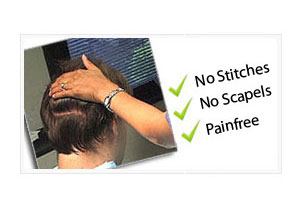
Advantages of FUE
Follicular Unit Extraction Technique (FUE)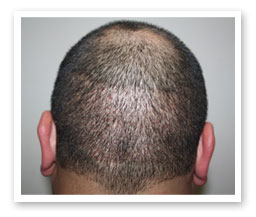
Donor AreaThe hair in the scalp are arranged in the form of groups called grafts. Each graft consists of 1-5 hair. These grafts are removed from the permanent zone of back and sides of the head. The hair in these grafts do not have a receptor in the area of the hair root and do not respond to the male hormone, testosterone. Also other sources of hair include: beard, chest, abdomen, legs. The surgeons at AK Clinics are routinely using the other body parts for patients who require higher number of grafts. 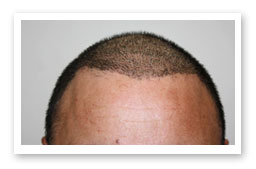
Recipient AreaThese hair are then implanted in the recipient area. The surgeons at AK Clinics take a lot of care to implant the right kind of grafts at the right place to give it a natural look. Growth of transplanted hair after surgery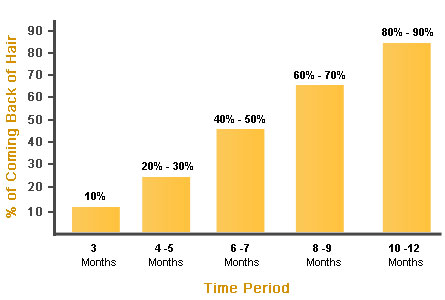
The transplanted hair grow for 2-3 weeks, then the hair shafts fall off, the roots remaining in the scalp and the shafts start coming back after 2-3 months of surgery. The hair come back at a very slow pace and a great deal of patience is required during this period. About 40-50% hair come back after 6 months and 75% after 9 months and about 90% of transplanted hair come back after 1 year of surgery. FUE Post OP Instructions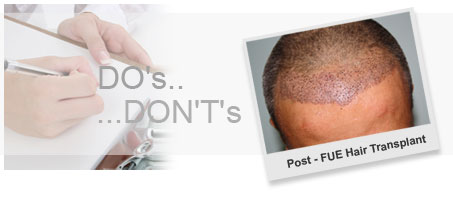
Find out about the leading hair removal treatments! Hair Removal Forum is a leading source of skin care and permanent hair removal. Don't wait, contact us today! Dental Tourism India 
Find us on Google+ |
|||||||||||||||||||||||||||||||||||||||||||||||||||||||||||||||||||||||||||||||||||||||


